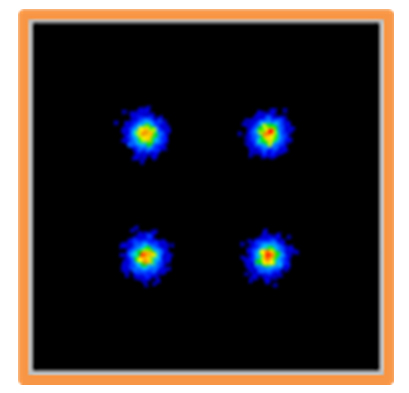In a previous blog, we discussed how network operators can leverage the latest Terabit Era Class 3 coherent technology to maximize network coverage by transporting nx400GbE client traffic across their networks. Acacia is currently shipping the Coherent Interconnect Module 8 (CIM 8) module leveraging this Class 3 technology, enabling network operators to reach every part of their optical network with the latest terabit era technology. The CIM 8 is the first coherent module on the market that breaks through the terabit threshold, providing 1.2T transmission over a single wavelength. It’s also the first >1T coherent pluggable module that provides operational advantages over embedded designs.
To date, multiple system vendors have converged around Class 3-based solutions (Figure 1), recently announcing their next generation offerings. This industry convergence creates the benefit of economies of scale and broad industry investments into the technology used in this baud rate class, the same class being used for 800G MSA pluggable solutions.

Advancements Resulting in 65% Power-per-Bit Savings Over Current Competing Solutions
Doubling the baud rate from Class 2 to Class 3 in silicon was a significant engineering achievement, combining design advancements in high-speed Radio Frequency (RF) and Analog to Digital Converter (ADC) and Digital to Analog Converter (DAC) components plus well-designed co-packaging integration of silicon and silicon photonic (SiPh) components. These achievements led to Acacia’s successful 140Gbaud in-house capability that is being leveraged in the commercially available CIM 8 solution.
With high-volume shipments of multiple coherent Class 2 module products utilizing Acacia’s 3D Siliconization, this proven co-packaging integration solution provided the foundation for extending this capability to Class 3 140Gbaud implementation utilized in the CIM 8 (Figure 2). 3D Siliconization maximizes signal integrity by co-packaging all high-speed components including the coherent Digital Signal Processor (DSP) application-specific integrated circuit (ASIC), transmitter and receiver silicon photonics, and 3D stacked RF components into a single device that is manufactured in a standard electronics packaging house. Silicon technology has demonstrated cost and power advantages over alternative technologies, making it the material system of choice for these higher baud rates. These advancements enabling a doubling of the baud rate have led to a 65% power-per-bit savings of CIM 8 over current competing solutions that utilize alternative optical material systems. In addition, the size and power savings of this latest generation enabled the ability to house this 1.2T 140Gbaud solution in a pluggable form-factor.

2nd Generation 3D Shaping Advances Coherent Performance
The CIM 8 is powered by Jannu, Acacia’s 8th generation coherent DSP ASIC. The design greatly expands on the success of the Pico DSP ASIC predecessor used in the widely deployed performance-optimized Class 2 AC1200 module (Figure 1). The AC1200 was the first module to introduce 3D Shaping, which provided finely tunable Adaptive Baud Rate up to 70Gbaud as well as finely tunable modulation up to 6 bits/symbol. The AC1200 had achieved record breaking spectral efficiency at the time of its introduction, as evidenced by a subsea trial over the MAREA submarine cable connecting Virginia Beach, Virginia to the city of Bilbao in Spain. Finely tunable baud rate helps maximize spectral efficiency in any given passband channel, converting excess margin into additional capacity/reach, and avoids wasted bandwidth due to network fragmentation.

The 5nm Jannu DSP ASIC in CIM 8 intelligently optimizes optical transmission using 2nd Generation 3D Shaping with an increased Adaptive Baud Rate tunable range up to 140Gbaud, as well as finely tunable modulation up to 6 bits/symbol using enhanced Probabilistic Constellation Shaping (PCS). With 2nd Generation 3D Shaping, the CIM 8 module can achieve a 20% improvement in spectral efficiency.
Terabit Era Solutions Provide Full Network Coverage
Class 3 technology not only ushers in the terabit era, but also enables full multi-haul network coverage as the high baud rate capabilities transport nx400GbE client traffic across a service provider’s entire network. Full network coverage is not only enabled by adjustment of the modulation, but also implies the capability to optimize for various network conditions which include overcoming transmission impairments.

CIM 8 offers significant power-per-bit reductions as well as cost efficiencies for various optical network transport applications.
DCI/Metro Reaches

Long-Haul Reaches

Ultra-Long-Haul/Subsea Reaches

In all the above scenarios, the CIM 8 utilizes advanced power-efficient algorithms to compensate for chromatic and polarization dependent dispersion. In addition, the module accounts for coverage of aerial fiber network segments that require fast state-of-polarization (SOP) tracking and recovery due to lightning strikes. The SOP tracking speed of CIM 8 is double the speed of its predecessor. This fast SOP tracking feature can also be utilized for sensing applications.
Network Operators Achieve Record Breaking Field Trials with CIM 8
CIM 8 capabilities have already been put to the test as illustrated by multiple record breaking field trials across a wide range of applications. These include >5600km 400G transmission over a mobile carrier’s backbone network, 2200km 800G transmission over a research and education network, and >540km 1T transmission over a wholesale carrier’s network.
Acacia continues to demonstrate its technology leadership by leveraging mature knowledge in proven silicon-based coherent technology, producing the first shipping coherent solution to lead the industry into the Terabit Era with the 1.2T pluggable CIM 8 module. With the breakthrough capability of 140Gbaud transmission along with the advanced Jannu DSP ASIC using 2nd Gen 3D Shaping and leveraging 3D Siliconization, network operators can support full network coverage for multi-haul applications, especially to support growing demands for nx400GbE and upcoming 800GbE traffic.
References:
Blog: Terabit Today: Maximize Network Coverage
Blog: How Industry Trends are Driving Coherent Technology Classifications
Blog Series: The Road Ahead for Next-Generation Multi-Haul Designs Part 1, Part 2, Part 3


